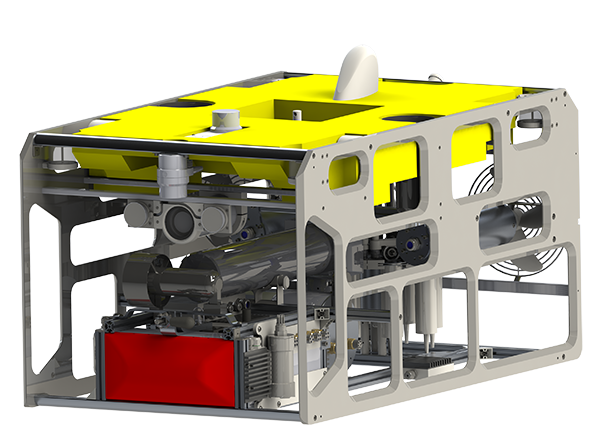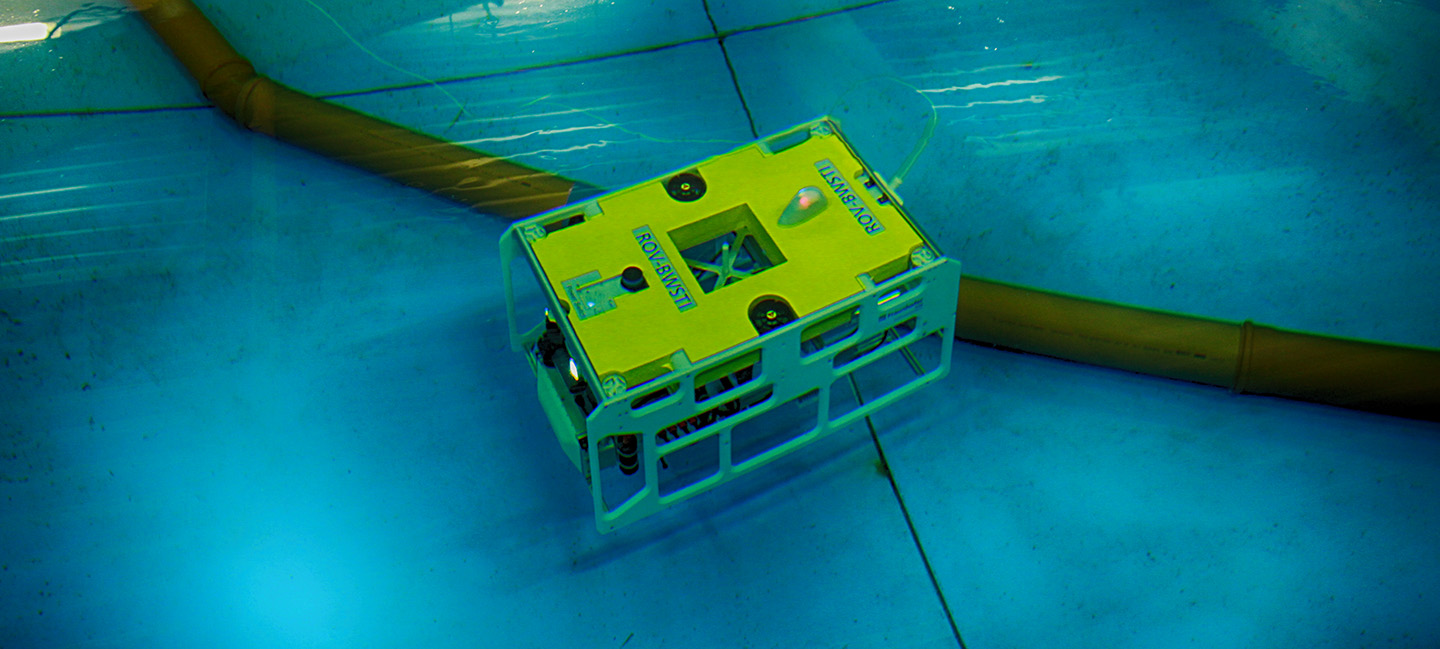New Fraunhofer research group develops methods for analyzing and filtering microplastics from the ocean
A new research group of the Fraunhofer-Gesellschaft is developing underwater applications at the Baltic Sea for a more compatible use of the seas by humans. In a first project, the researchers are devoting themselves to the topic of microplastics in the oceans.
An interdisciplinary research group with members from four Fraunhofer Institutes has recently started its work on the premises of the Rostock fishing port. This is a further step in the development of the "Ocean Technology Campus Rostock" (OTC), whose vision is supported and promoted by the Fraunhofer-Gesellschaft together with numerous partners. The aim of many local, regional and national players is to establish the Hanseatic city as a leading location for technological underwater research by closely networking science and industry. In the new "Smart Ocean Technologies" research group, experts from IT, materials science, engineering, electronics, sensor technology, energy technology, and automation and systems technology work together on complex system solutions for underwater applications. With the combined competencies of the Fraunhofer Institutes IGD, IGP, IOSB and IKTS, the group's research topics range from hardware-related sensor and system integration, the coupling of computer vision, data mining and machine learning processes, as well as the testing of novel analysis methods to the development of autonomous systems.
Declared fight on microplastics
A first project deals with the analysis of plastic waste in the sea with the aim of efficiently obtaining information on concentration and distribution - only then can the fight against ocean pollution be successful. The aim of the project is to develop an expandable technology platform that can operate autonomously on underwater vehicles. This platform can be extended by different sensors and thus will be able to analyze organic and inorganic pollutants in seawater on the spot in the future.

Analysis and filtering in one step
Up to now, the analysis process has been extremely complex and involves several stages. After sampling, plastic particles are elaborately filtered out by laboratory methods to calculate the concentration. In addition, the samples are currently mainly taken at the sea surface. The Fraunhofer solution aims to remedy both of these problems. An optical particle sensor detects the plastic particles, and the images are immediately analyzed automatically using deep-learning methods - the system is attached to an underwater vehicle that not only travels to different areas and depths, but could also use the new measuring method to carry out on-site filtering and extraction. This is the vision of the young research group, and there is still a lot of work to be done by the team, which currently consists of 10 members, before it can be realized. One challenge, for example, is the aging process and the associated change in the material of the plastic particles - some of which are microscopic - floating in the sea. The corresponding sensor must be trained to detect microplastic particles in any state, regardless of how long they have been drifting in the sea.
Real test possibilites in the Baltic Sea
The planned underwater test field off the coast of Nienhagen - the Digital Ocean Lab (DOL) - will be used to develop and test the solutions. Currently still in the approval phase, it will be available at a later date for in-situ test series, i.e. underwater trials of the newly developed technology under real conditions. Testing in a real environment will be a novelty and an important aspect for the success of the developments. At the same time, the research group will provide valuable input for the further design of the underwater test field with its initial work and will participate conceptually in its further development. As the heart of the OTC, the versatile underwater test field near the coast will be prepared for various application scenarios such as offshore wind, aquaculture, clearance of old ammunition and many more. It will serve research and industry alike to test, evaluate and optimize materials, modules and complete underwater systems under controlled conditions in a real environment.
Fraunhofer »Smart Ocean Technologies« (SOT)
The interdisciplinary research group of the Fraunhofer-Gesellschaft "Smart Ocean Technologies" (SOT) at the Rostock site develops future-oriented marine technology and new solutions for a more compatible use of the oceans. The employees of the Fraunhofer Institutes IGD, IGP, IOSB and IKTS act as a Europe-wide unique research association of underwater technology in the context of the "Ocean Technology Campus Rostock" (OTC). As an innovation campus it creates a productive environment for the development and testing of high technology for a sustainable use of the oceans. In close cooperation between research and industrial application of various disciplines, the location Rostock is to be developed into the leading center of technological underwater research in the coming years. The Federal Ministry of Education and Research and the Ministry of Education, Science and Culture of Mecklenburg-Western Pomerania support the Fraunhofer-Gesellschaft in setting up the research group. The heart of the OTC is the planned "Digital Ocean Lab" (DOL) of the Fraunhofer Institute for Computer Graphics Research IGD, a versatile underwater test field near the coast, which is pre-equipped for various application scenarios and is unique in this form. It will be used to test, evaluate and optimize materials, modules and complete underwater systems under controlled conditions in a real environment.
More informationen:
- More about the Fraunhofer research group »Smart Ocean Technologies«
- More about subsea research at Fraunhofer-Gesellschaft
- More about the Ocean Technology Campus
Fraunhofer IOSB departments involved in the SOT research group:
Last modified:
 Fraunhofer Institute of Optronics, System Technologies and Image Exploitation IOSB
Fraunhofer Institute of Optronics, System Technologies and Image Exploitation IOSB 